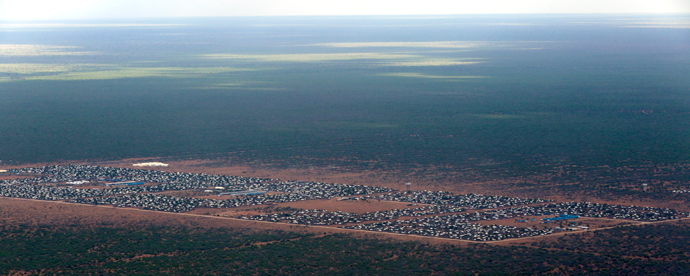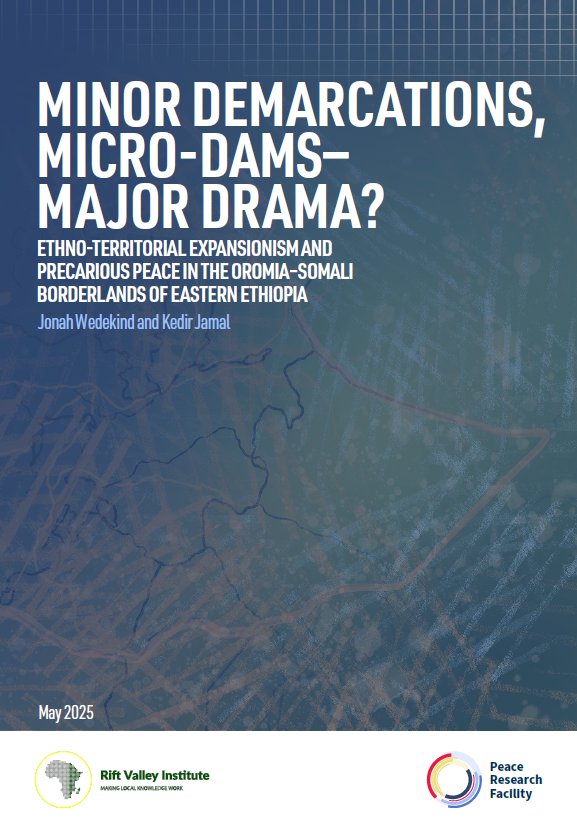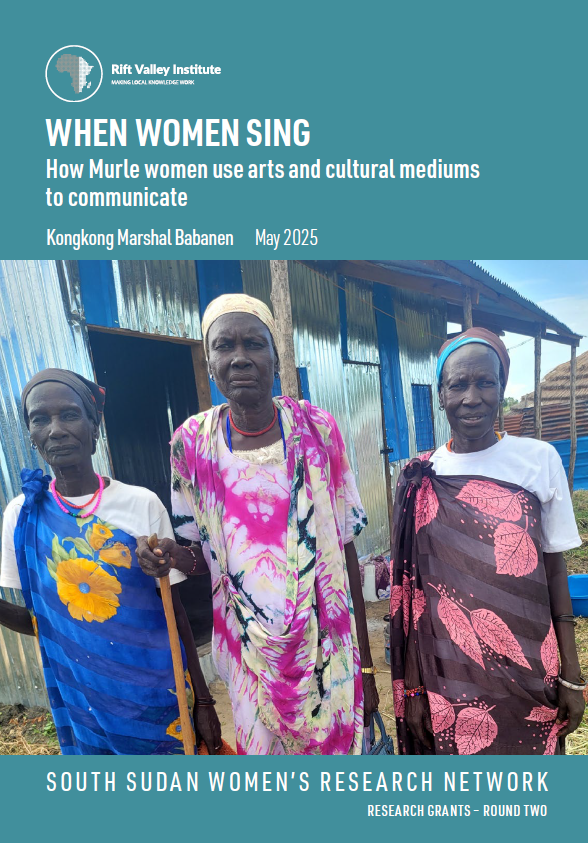This blog post was written by Terrence Lyons and Laura Hammond, the Co-Directors of Studies for the Rift Valley Institute’s Horn of Africa Field Course, which will be taking place in Entebbe, Uganda from 9–15 July 2016. Terrence and Laura will be joined by a team of regional and international specialists to explore the contemporary complexities of the region as well as the gamut of social, economic, political and security trends, drawing on deep history and local knowledge to inform debate and discussion. The theme of this year’s course is ‘Migration, Mobility and Displacement in a Climate of Rapid Change’. The courses are designed for policy-makers, diplomats, investors, development workers, researchers, activists and journalists—for new arrivals to the region and those already working there who wish to deepen their understanding. For more information on the Horn of Africa Course and RVI’s two other Field Courses—Sudan & South Sudan and the Great Lakes—please visit RVI Field Courses.

In Ethiopia, elections in May 2015 resulted in victory for the ruling Ethiopian Peoples Democratic Front (EPRDF) who won 100 percent of the seats in parliament. The outcome sent an unambiguous message for the party’s own rank and file. It signaled that the EPRDF, despite the death of long-time leader Meles Zenawi in 2012, would continue to function as before. Access to office and resources would be regulated from the top down and no viable political alternatives would exist outside the ruling party.
At the same time, the need to dominate and to close the political space to dissent reflects, to some analysts, an underlying brittleness in the regime. Insignificant challenges, such as a group of young bloggers known as Zone Nine, peaceful protests around the issue of how the leadership of the Islamic High Council would be selected or concerns in the Oromo region around a draft plan to expand the jurisdiction of Addis Ababa, were violently suppressed. Demonstrations in the Oromo region spread quickly and reflect both a deep historical sense of marginalization combined with contemporary perceptions of government exclusion, which have created circumstances that are particularly volatile.
On the economic front, the ‘Ethiopia Rising’ narrative —with double-digit growth rates for many years—struggled with an older narrative of drought as Ethiopia, along with many parts of Eastern Africa, is experiencing severe food security challenges related in part to the impact of El Niño-induced weather patterns. As a result, 10.2 million people in Ethiopia, and another 4.7 million in Somalia, are estimated to be food insecure. Regionally, the Horn of Africa remains volatile, where instability often crosses borders and where regional organizations, such as IGAD, lack the ability to manage conflicts. Ethiopia and Eritrea remain locked in a frozen, costly border conflict, violence in Somalia interacts with grievances in the Ethiopian Somali region and Ethiopian troops are a key part of AMISOM.
Eritrea continues to be a closed political system with President Isaias Afewerki and his People’s Front for Democracy and Justice (PFDJ) exerting near total control. The small country is producing extraordinarily high numbers of refugees, creating significant concerns in Europe and elsewhere and renewing diplomatic interest in the country after years of isolation. Many of those fleeing claim to be escaping from conscription in the national service program. Reports from the UN’s Commission of Inquiry on Human Rights accused Eritrea of systematic, widespread and gross human rights violations, a report that Asmara dismissed as politically motivated. The UN Monitoring Group on Somalia and Eritrea reported that there was no evidence of continued Eritrea support for al-Shabaab, and the release of four Djiboutian prisoners of war created new opportunities for regional diplomatic engagement. While the economy remains weak and drought has reduced agricultural production, increased activity in the mining sector is beginning to bring in much needed foreign exchange.
Somalia has been grappling with the difficulties of establishing a system of federalism in the absence of a final constitution to provide a blueprint for such a system. The Somali Federal Government, with support from the African Union peacekeeping force AMISOM, is managing to stay in power in most cities in South Central Somalia. However, security is still enormously fragile and several incidents involving attacks on civilians and on AMISOM targets have led many living in Mogadishu and other cities in the country to conclude that the overall security condition is worsening. Poor relations between the Puntland government and the central government have hampered efforts to push forward on plans for the political transition in 2016.
Somalia’s move towards a more representative electoral process has progressed slowly over the past year. Debates over the shape of a federal system of government, the composition and leadership of the new and more established federal states, the future of the 4.5 clan formula for political representation and women’s role in legislative politics have slowed and at some points threatened to derail the political process. In January, the government proposed a blueprint for such a process, including the creation of an electoral college to elect the lower house of Parliament and the formation of an Upper House representative of the federal regions. The proposed model was initially rejected by Puntland, which considered that it was being disadvantaged by it however an agreement in April saw Puntland accept the terms of the proposed election model at the conference of the National Leadership Forum, with an understanding that universal elections will be held in 2020.
In Somaliland, the elections originally scheduled for 2015 have been delayed until March 2017 due to a lack of preparedness on the part of both government and opposition parties. The biometric voter registration process was suspended in April for one month as a result of the drought currently affecting the region, which has hit western regions of Somaliland particularly hard. International actors are placing great pressure on political administrations in both Mogadishu and Hargeysa to stick to the schedule for elections that had been approved.
Tensions between Somalia and Kenya heightened significantly over the course of the year, with Kenya stepping up efforts to close the Somali refugee camps. It cited concerns over security threats thought to be emanating from the camps, as well as frustration over significant declines in funding from international donors at a time when Europe is increasing funding for refugees elsewhere. In Somalia popular opposition to Kenya’s military intervention, as well to Ethiopia and the AMISOM-troop contributing countries grew significantly. This has been fuelled by repeated reports of abusive behaviour by foreign troops inside Somalia and the continuation of generalized violence and insecurity in the country that the intervention has failed to stem. Al-Shabaab continues to control large swathes of rural southern Somalia, and has recently made incursions northwards posing a significant threat for Puntland’s security forces.
Djibouti held elections in April 2016 and to no one’s surprise President Ismail Omar Guelleh was handed a fourth term of office. Despite this continuity, a significant challenge to Guelleh’s power could be seen in the dismissal by a UK High Court of the corruption case against Djibouti’s most powerful businessman and one-time political rival to Guelleh, Abdirahman Boureh.


